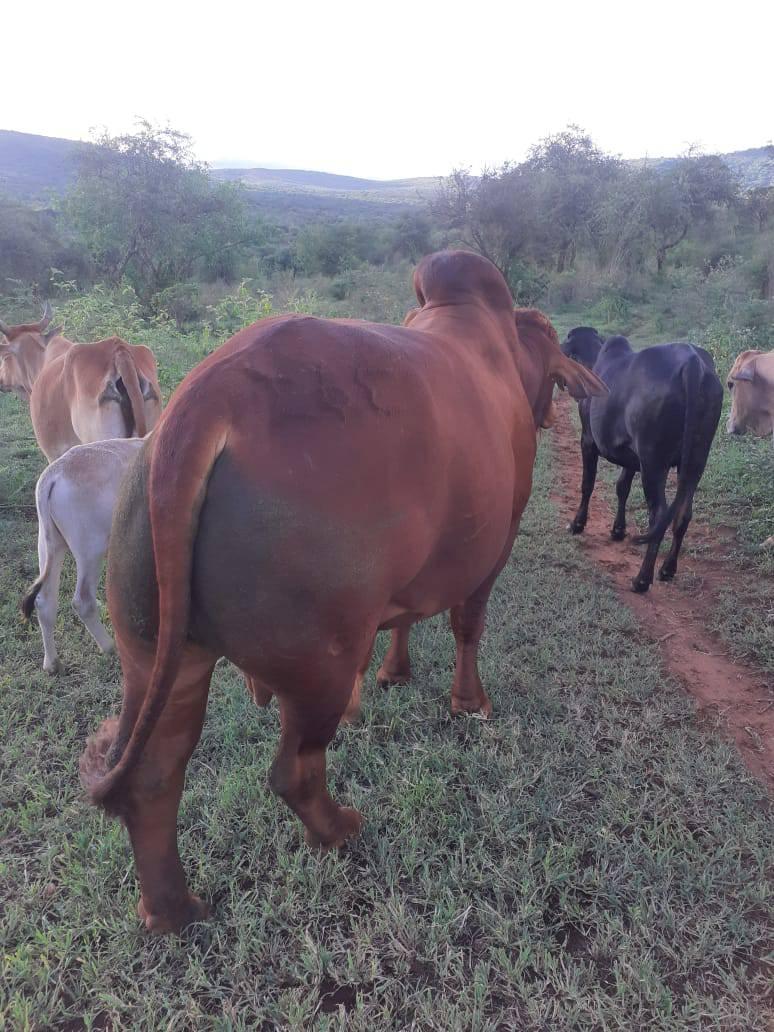By George Munene
Greenland Sahiwal are Narok-based private Sahiwal breeders with a herd of close to 100 cattle. Farm director John Nayok points out that they opted to rear Sahiwal cattle due to their adaptability and tolerance to drier weather extremes; the breed can survive in harsh Garissa, Turkana, and Marsabit climates. Despite this, Sahiwal are good milkers and attains double the weight achieved by indigenous breeds
” Our Sahiwal cows average between 10-12 liters daily with little supplementation. They also gather weight quicker than any local breed; this makes the Sahiwal a true exotic dual-purpose breed. They’re economical to maintain for farmers in marginal areas in that they attain average weights of up to 450 kg while subsisting on similar pastures fed to Zebu for example, which only weigh about half as much while producing just 3.7 liters daily,” Nayok explains.
Originally from Pakistan, Sahiwal is a dual-purpose cattle that have been indigenised to suit local Kenyan conditions by KALRO’s Dairy Research Institute at Naivasha since the 1960s.
Physically the breed is distinguished by its characteristic hump and pale red/ dark brownish coat.
Related News: Sahiwal breed earns Meru farmer more profit
Related News: Sahiwal and Jersey cow breeds most suitable for arid and semi-arid areas
Through decades of breeding the Kenyan Sahiwal is both drought and disease-resistant.
“It grows faster than the indigenous Zebu, meaning a farmer can be able to sell the cow within a shorter period,” explains KALRO’s Dairy Research Institute director Dr. Titus Lenyasunya.
At the same time, the breed is tolerant of tick-borne disease, a common disease afflicting cows in tropical countries such as Kenya.
The institute has also crossed Sahiwal bulls and Friesian cattle to develop a crossbreed.
This progeny yields between 30 and 20 liters daily–half the amount of milk gotten from their pedigree mothers, but double the amount of milk produced by purebred Sahiwal.
They are adapted to transitional areas such as Laikipia, Kajiado, and parts of Nyandarua and Ukambani that are not very dry, nor very wet.
Sahiwal cows average between 2000 to 2500 kilograms of milk in one lactation cycle that lasts about 293 days. Their milk has a high butter-fat content of five to six per cent.
If fed semi-intensively on a high plane diet the breed can produce up to 25 liters per day. This includes natural pastures such as boma Rhodes, Kikuyu grass, star grass as well as protein legume supplements. Concentrates like dairy meal, maize germ, poultry waste, and dairy mineral licks should also be offered
They are a large cow breed averaging a live weight of 425 kg for cows and 500 kg for bulls.

According to KALRO Naivasha representatives, Sahiwal cattle are at the moment not available for sale to farmers. Sahiwal bulls will however be availed to farmers between July and August.
Related News: Farmers suffer milk collapse on changing cows’ environment
Through the Kenya Animal Genetic Resources Centre (KAGRC) in Kabete, formerly Artificial Insemination Centre, farmers can acquire Sahiwal semen. These are available for Sh250 a dose countrywide through the nearest KAGRC representative agents.
Greenland have reared Sahiwal cows for two years and are registered with the Kenya Stud Book. From them, farmers can buy purebred Sahiwal heifers for Sh70,000 and bulls range from between Sh60,000 to Sh200,000.
KALRO Naivasha:0722758197
KAGRC: 0728899767/ 0737540670,
Greenland Sahiwal: 0752561231